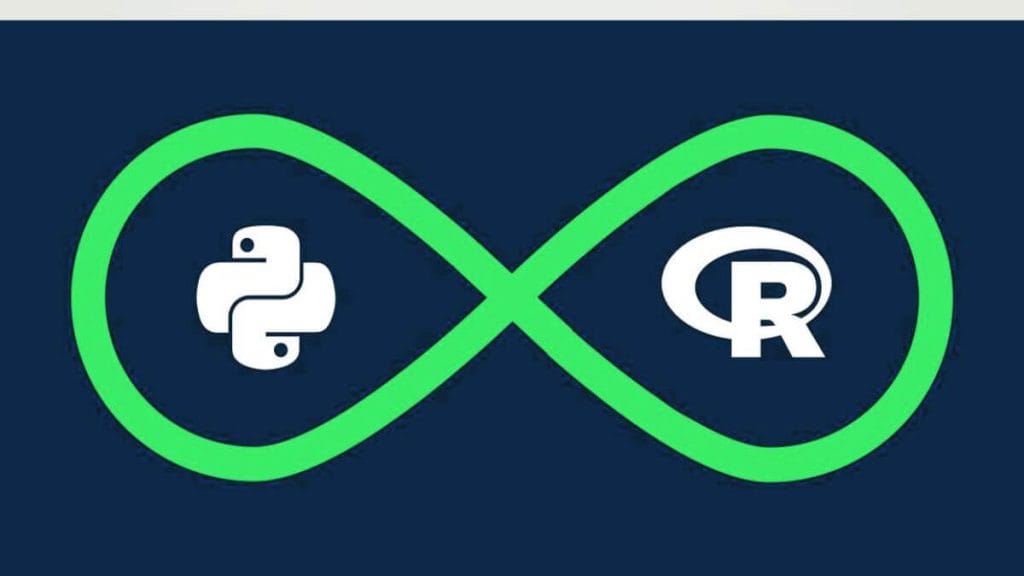Data analysis and statistics are essential skills for anyone dealing with data and extracting meaningful insights. Whether you are a researcher, a business analyst, a data scientist, or a student, you will need to use a programming language to do various tasks, such as machine learning, statistical modeling, data processing, and data visualization.
In this article, we will compare Python vs R in data analysis based on a variety of factors, including learning curves, data manipulations, data visualizations, statistical analysis, data analysis, and machine learning.
Learning Curve
When choosing a programming language, you should take into account how easy or difficult it will be to learn and use. Python and R are both considered fairly easy languages to learn, but their differences may affect your learning process.
Python is known for its clear and readable syntax, making it an excellent choice for beginners. Its syntax resembles plain English, making it easier for users to understand and learn quickly.
R, on the other hand, has a syntax that is specifically tailored for statistical analysis. While it might be a bit steeper for beginners, statisticians and data scientists often find it intuitive and expressive for their purposes.
Data Manipulation
Data manipulation involves modifying, purifying, and reorganizing data so that it is ready to be analyzed. R and Python both have powerful tools and libraries for manipulating data, but they handle data structures and operations differently.
Python comes with a data structure called a list that can hold any type of data, including numbers, strings, or other lists. However, lists are not very efficient for data manipulation because they are slow and use a lot of memory. Therefore, Python users usually rely on external libraries like NumPy and pandas to work with data.
R has a built-in data structure called a vector which can store homogeneous data, such as numbers, in a one-dimensional sequence. Vectors support various mathematical and statistical operations and are fast and memory-efficient.
Data Visualization
Data visualization involves creating graphical representations of data for sharing and exploring information. R and Python both have powerful libraries and tools for data visualization, although they do so differently.
Python comes with a built-in library called matplotlib, which allows users to create and modify different types of plots including line plots, bar plots, scatter plots, histograms, and pie charts. While Matplotlib is highly versatile, it can be complex and wordy to use. As a result, Python users frequently depend on external libraries such as seaborn and plotly to create and customize plots.
R comes with a library called base R, which allows users to create and personalize different types of plots like line plots, bar plots, scatter plots, histograms, and pie charts. While base R is adaptable and multifaceted, it can also be verbose and complicated to operate.
Statistical Analysis
Statistical analysis involves testing hypotheses, inferring parameters, and concluding data using statistical methods. Python and R both have powerful tools and libraries for statistical analysis, but they perform and interpret statistical tests and models differently.
Python has Statsmodels and SciPy libraries that cover a wide range of statistical tests and models. Python’s ecosystem is well-suited for integrating statistical analysis into data workflows seamlessly.
R has a long-standing reputation for statistical analysis, with numerous built-in functions and packages like stats and lme4. R’s strength lies in its statistical modeling capabilities, making it a preferred choice for researchers and statisticians.
Python and R are both powerful data analysis tools, but the choice between the two is often dependent on personal preferences, experiences, and specific project requirements.
Statisticians and researchers can use R’s statistical power and specialized packages, while Python’s flexibility and ease of use make it ideal for general-purpose development. Statistical power and specialized packages in R meet the needs of statisticians and researchers alike, while Python’s flexibility and ease of use make it perfect for general-purpose development. Ultimately, which Python language or R language you choose depends on the project’s objectives and requirements.

